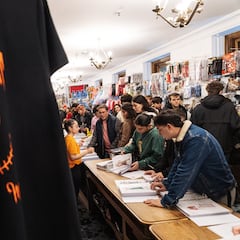Why is Halloween candy more expensive this year?
Candy prices have risen rapidly, leading those who want to offer a treat to those in costume to fork over a bit more money this Halloween.


Since last September, the prices of candy and gum have increased by seven percent. With Halloween here, many will be paying more to provide treats to their visitors in costume this evening. The most recent data from the Bureau of Labor Statistics is from September, and likely prices have risen even further in anticipation of the surge of demand that comes with Halloween.
Candy & gum prices are up ~13% this October compared to October 2022.
— Rafael | Shield Investor (@ShieldInvestor) October 31, 2023
From October 2021 to October 2022, this increase was already 14%.
Halloween is truly getting expensive.
Agree?
🎃
What is driving up prices?
The increase in the price of candy is nothing new. When comparing prices today to those before the pandemic, candy costs 26 percent more today than in 2019.
CNBC reported that climate change is partly to blame for the surge in prices, with “a warmer farming season with less rainfall, especially in West Africa where much of the world’s cacao is produced,” leading to shortages of chocolate’s key ingredient. The price of cacao within commodity markets has increased 46 percent over the last year. AJ+ took a look at the impact climate change could have on the cocoa sector years ago, and now, many of the concerns raised are starting to be felt by those who grow and produce the product.
The impacts of market consolidations
Related stories
Additionally, the candy market in the United States is highly consolidated, giving the companies outsized power to set prices. Four companies, Mars Wrigley Confectionery, Mondelez International, the Hershey Company, and Ferrero, produce nearly all the top candies distributed during Halloween. According to Candystore.com, the top ten most popular Halloween candies are M&Ms (Mars Wrigley), Sour Patch Kids (Mondelez International), Reese’s Cups (Hershey’s), Hershey’s Mini Bars (Hershey’s), Butterfinger (Ferrero), Starburst (Mars Wrigley), Skittles (Mars Wrigley), Hot Tamales (Just Born), Tootsie Pops (Tootsie Roll Industries), and Twix (Mars Wrigley).
Market consolidation drives up prices as there is less transparency over precisely what factors drive up prices. With fewer competitors, companies can continue to increase prices with very little pushback from consumers because shoppers lack other options.

